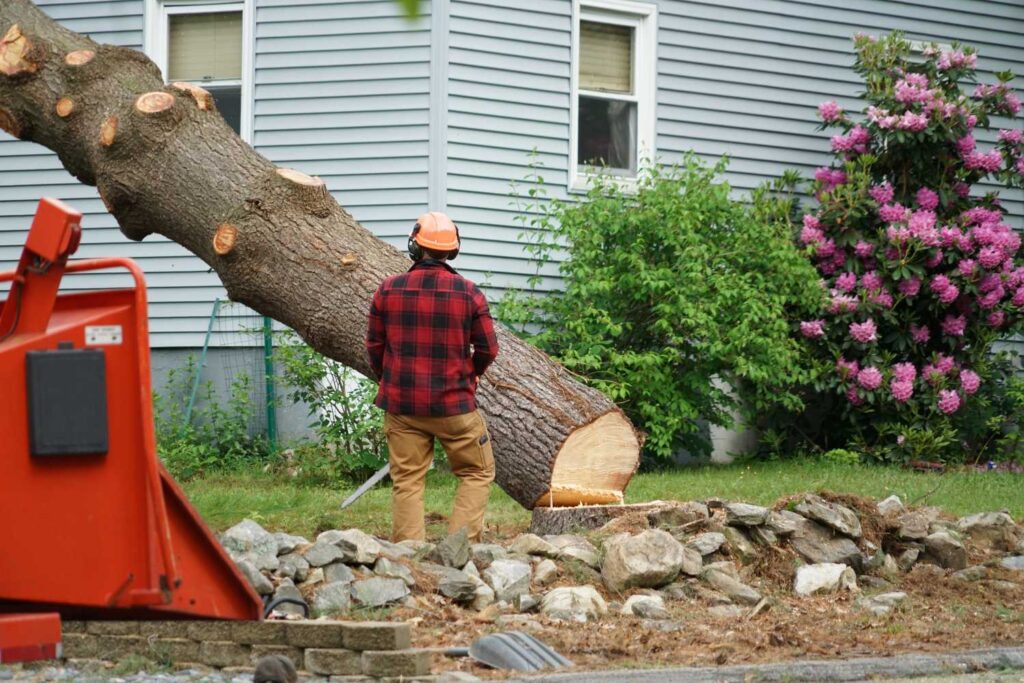The majestic presence of trees can significantly enhance property aesthetics, provide essential shade, and contribute to the local ecosystem. However, trees require maintenance to ensure they remain healthy, safe, and structurally sound. For property owners, a common dilemma arises when a tree shows signs of distress or overgrowth: is the situation remedied by tree trimming, or does it necessitate complete tree removal? Understanding the critical differences between these two services is paramount for making an informed, responsible, and safe decision for your property and the surrounding environment.
Read on to learn whether you need tree removal or tree trimming.
Understanding Tree Trimming: Objectives and Benefits
Tree trimming, often interchangeably used with tree pruning, is a preventative and maintenance-focused practice. It involves the selective removal of specific branches or stems to benefit the entire tree’s health and development. This process is about strategic cuts to improve form and function.
The primary objectives of tree trimming include:
- Health Improvement: Removing dead, diseased, dying, or rubbing branches allows the tree to direct its energy toward healthy growth. It improves air circulation and sunlight penetration through the canopy, vital for the tree’s vitality.
- Safety Enhancement: Trimming can eliminate weak or hanging limbs that could fall and cause property damage or personal injury, especially during severe weather events.
- Aesthetic Shaping: This practice can help maintain a desired shape or size, ensuring the tree complements the landscape rather than overwhelming it.
- Clearance: Trimming can provide necessary clearance from structures, roofs, power lines, and sidewalks, preventing interference and damage.
Regular trimming is a cornerstone of responsible tree care, typically performed every three to five years depending on the species and its environment. However, if you want to know whether trimming is the right solution to ensure your trees’ health and structural integrity, consulting with certified professionals, such as experienced tree arborists in the Blue Mountains and other similar locations, can provide the expert assessment needed to navigate this choice.
Recognizing When Tree Removal is the Only Option

While tree trimming is a measure to preserve a tree, tree removal is cutting down and eliminating a tree from its location. This is a last resort, considered only when a tree can present a significant danger to some structures, including your home’s foundation and roofing system or is beyond recovery.
Some key indicators that tree removal may be necessary include:
- Irreversible Disease or Infestation: When a tree is succumbing to a pervasive disease or a severe pest infestation that has compromised over 50% of its structure, removal may be required to prevent the issue from spreading to other healthy plants.
- Significant Structural Damage: A tree with a hollow or extensively decayed trunk, a cracked stem, or severe root damage is structurally unsound. Such trees are unstable and can pose a high risk of catastrophic failure.
- Proximity and Risk: After a storm, a tree that’s leaning dangerously toward a home, garage, or power line may need to be removed preemptively to mitigate risk, even if it appears healthy.
- Root System Damage: If construction or soil erosion has severely damaged the critical root zone, the tree’s stability and ability to absorb water and nutrients are compromised, often leading to a recommendation for removal.
- Natural Death: Once a tree is completely dead, it becomes brittle and unpredictable. Dead trees can attract pests and are almost certain to drop limbs or fall over entirely, making their removal a safety imperative.
Ultimately, the decision to remove a tree is substantial and should never be taken lightly due to the ecological and aesthetic value trees provide.
The Critical Role of Professional Assessment
Deciding between trimming and removal isn’t always straightforward for an untrained individual. What may appear to be a dying tree might only be in dormancy, and what looks like a healthy tree could be hiding internal decay. This is where the expertise of a certified arborist becomes invaluable.
A professional arborist can conduct a comprehensive evaluation, often called a tree risk assessment. This assessment examines multiple factors, such as the tree’s species and growth patterns, the extent of decay, soil conditions, lean angle, and the surrounding environment. They can identify whether targeted trimming can rectify the issues or if the risks associated with keeping the tree are too great. Relying on professional guidance can ensure the decision is based on science and safety, not just appearance.
Consequences of Incorrect Choices
Choosing the wrong service can have lasting negative impacts. Opting for trimming when removal is necessary leaves a hazardous tree standing, creating an ongoing liability. Conversely, removing a tree that could have been saved with proper pruning results in the unnecessary loss of a valuable asset that took decades to grow.
Furthermore, improper trimming techniques, such as tree topping or the drastic cutting back of large branches, can severely damage a tree, leading to disease, insect invasion, and weak, unstable new growth. This typically accelerates the tree’s decline, turning a maintenance issue into a future removal project.
Conclusion
The choice between tree removal and tree trimming may depend on a detailed evaluation of the tree’s condition, environment, and potential risks. Tree trimming is a vital health and maintenance procedure for preserving robust trees, while tree removal is a necessary solution for eliminating imminent dangers. Property owners are strongly advised to seek a professional consultation for an accurate diagnosis and recommendation.
Lastly, by keeping the information mentioned above in mind, you can protect your investment, ensure the safety of your family and property, and contribute to the responsible stewardship of the local tree canopy.

